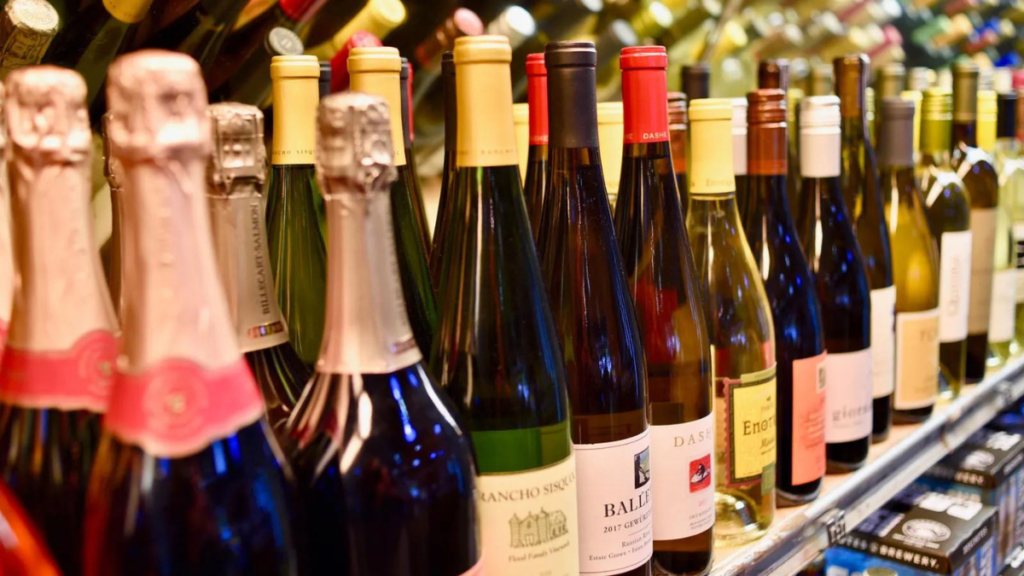Wine prices are rising globally, with the US being the world’s largest consumer. The rise is attributed to economic pressures, supply chain disruptions, raw material costs, consumer perceptions, and the influence of wholesalers. In 2022, the average retail price of a bottle of wine from California’s Napa Valley rose by $17, propelling the average bottle price to $108 in 2023. The inflationary economy, broader international economic concerns, restrictive pricing mechanisms, and extreme weather events contribute to the surge. The Covid-19 pandemic has exacerbated supply chain issues, with the cost of natural gas skyrocketing, increasing the price of glass in the US by up to 20%. Other packaging materials and labor costs have also increased, making it more expensive to harvest grapes and bottle wine. Consumers have become accustomed to higher prices, leading winemakers to maintain elevated price points. The US wine industry operates on a “three-tier” distribution system, with three major wholesalers influencing pricing trends. Climate change is also affecting wine prices, making it challenging for winemakers to predict harvest outcomes.
Economic Pressures and Unprecedented Price Hikes
In 2022, the average retail price of a bottle of wine from California’s prestigious Napa Valley rose by a staggering $17 (£13.6), propelling the average bottle price to $108 (£86) in 2023. Wines priced at $100 (£81) or more per bottle saw an astonishing 34.2% increase in 2021 and an additional 7.8% in 2022. The inflationary economy undoubtedly plays a role in this surge, but experts point to other contributing factors such as broader international economic concerns, restrictive pricing mechanisms in the US, and extreme weather events.
Supply Chain Disruptions and Raw Materials
Winemakers, particularly small vineyards, are grappling with supply chain issues exacerbated by the aftermath of the Covid-19 pandemic. The reliance of US winemakers on European glass manufacturers has become a vulnerability, with the cost of natural gas—integral to glass production—skyrocketing following geopolitical events like the Russian invasion of Ukraine. As a result, the price of glass in the US surged by as much as 20% in the past year, adding to the production costs for winemakers.
Moreover, the costs of other packaging materials, such as labels, corks, and capsules, have witnessed dramatic increases. Shalini Sekhar, a winemaker and proprietor of Ottavino Wines in California, emphasizes that vineyards often face time constraints, leaving them at the mercy of supplier prices. Labor costs have also risen, making it more expensive to harvest grapes and bottle wine, further contributing to the overall increase in production costs.
Consumer Perceptions and Inelastic Price Points
During the pandemic, some winemakers offset rising costs by raising prices as alcohol sales spiked, and consumers tolerated the higher prices amid inflated demand. Despite a decrease in demand since the pandemic, consumers have become accustomed to higher prices, leading winemakers to maintain elevated price points. Andrew Adams notes that in the wine industry, a bottle’s price point is often inelastic, as consumers associate lower prices with lower quality. Even if consumption falls, dropping prices can alter consumer perceptions in ways that are challenging to reverse when demand rebounds.
The Role of Wholesalers in Pricing
The US wine industry operates on a “three-tier” distribution system regulated by the government, where producers sell to distributors or wholesalers, who then sell to retailers. Three major wholesalers wield significant influence over wine producers and sellers, impacting pricing trends. Winemakers, dependent on wholesalers for widespread distribution, often adhere to wholesale pricing trends to maintain market placement. As a result, producers are incentivized to focus on mid- and high-priced wines with less price-sensitive consumers, contributing to higher overall prices.
Climate Change and Unpredictability
An additional wildcard in the evolving landscape of wine prices is climate change. Traditionally, predictability has been crucial for the wine industry’s success, influencing pricing and maintaining product quality. However, climate change is introducing erratic weather patterns, making it challenging for winemakers to predict harvest outcomes. Extreme weather events, such as wildfires and temperature extremes, have become more common, disrupting the consistency vintners once relied upon. Shalini Sekhar notes the transformation from predictable harvest schedules to an environment where grape varieties ripen at different times and under varying conditions, challenging traditional winemaking practices.
Conclusion
As wine prices continue to surge globally, a confluence of economic, environmental, and industry-specific factors is driving this phenomenon. From supply chain disruptions and raw material costs to the influence of wholesalers and the impact of climate change, the future of wine prices remains uncertain. The wine industry must adapt to these challenges, finding innovative solutions to maintain quality, meet consumer expectations, and navigate the unpredictable terrain shaped by economic shifts and climatic variations.







